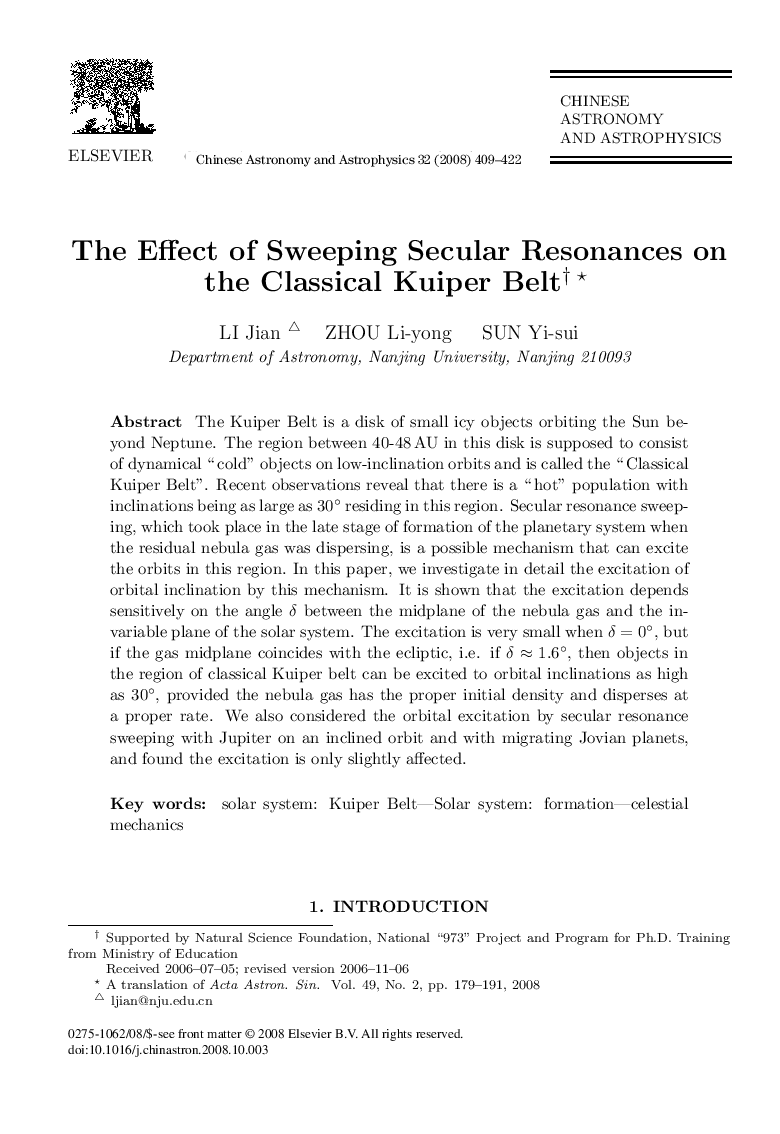| Article ID | Journal | Published Year | Pages | File Type |
|---|---|---|---|---|
| 1771961 | Chinese Astronomy and Astrophysics | 2008 | 14 Pages |
Abstract The Kuiper Belt is a disk of small icy objects orbiting the Sun beyond Neptune. The region between 40-48AU in this disk is supposed to consist of dynamical “cold” objects on low-inclination orbits and is called the “Classical Kuiper Belt”. Recent observations reveal that there is a “hot” population with inclinations being as large as 30̊ residing in this region. Secular resonance sweeping, which took place in the late stage of formation of the planetary system when the residual nebula gas was dispersing, is a possible mechanism that can excite the orbits in this region. In this paper, we investigate in detail the excitation of orbital inclination by this mechanism. It is shown that the excitation depends sensitively on the angle δ between the midplane of the nebula gas and the invariable plane of the solar system. The excitation is very small when δ = 0̊, but if the gas midplane coincides with the ecliptic, i.e. if δ ≈ 1.6̊, then objects in the region of classical Kuiper belt can be excited to orbital inclinations as high as 30̊, provided the nebula gas has the proper initial density and disperses at a proper rate. We also considered the orbital excitation by secular resonance sweeping with Jupiter on an inclined orbit and with migrating Jovian planets, and found the excitation is only slightly affected.
